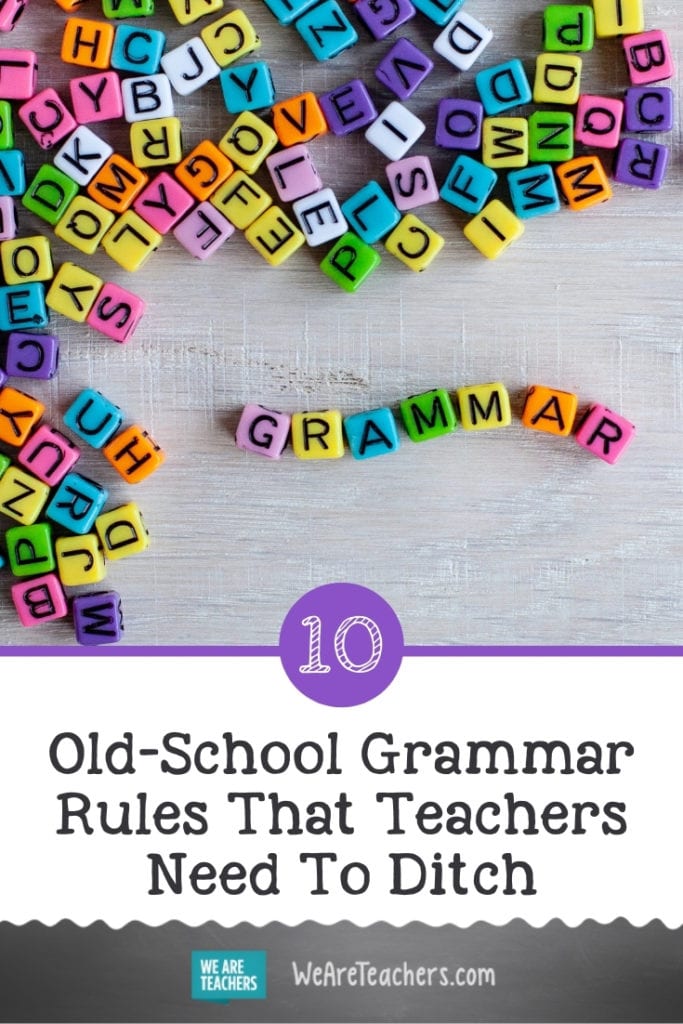Relax, Oxford comma purists. We’re not coming for you. Whereas the Oxford comma helps prevent confusion (after all, My heroes are my parents, Mother Teresa and the Dalai Lama takes on a whole new meaning without it), we can’t say the same for other grammar rules. The English language is constantly evolving, and with it, the rules that govern it. And so, grammaristas, it’s time to channel your inner Elsa and let these old school grammar rules go.
1. Don’t split infinitives
Trekkies, rejoice! Despite the Star Trek tagline, there are some of us who learned, or taught, that infinitives (to + [verb]) shouldn’t be split by adverbs. It was as if infinitives were happily married, and an adverb was a shady divorce attorney trying to drum up business. But in fact, sometimes splitting an infinitive is a good option. It can sound better (“To boldly go” seems a lot more courageous than “To go boldly”). Or it can make a sentence less strange or more clear (She decided to carefully toss her phone to her friend means something different than She decided carefully to toss her phone to her friend).
2. And don’t start a sentence with a conjunction
What’s your function? Just because you’re a teacher doesn’t mean you can’t do other things. And just because a conjunction generally connects words, phrases, and clauses doesn’t mean it, too, can’t do other things—like begin a sentence. Occasionally adding an and, or, or but to the beginning of a sentence adds a little flavor to the writing.
3. Don’t end a sentence with a preposition
Again, words are versatile, people. Live a little. End a sentence with a preposition. The grammar gods will not strike you down. (See what we did there?)
4. Their shouldn’t be singular
Despite what you may think or might have heard, the acceptance of the singular their isn’t some new linguistic phenomenon. Their has been used as a singular pronoun for centuries. So when a so-called stickler tries to challenge its use in that way, be sure to correct them. Besides, even if history wasn’t on our side, using their as a singular pronoun makes language more gender inclusive—and that’s always a good thing.
5. That a comma = take a breath
This is a rule that seems to make sense, but it only works sometimes and doesn’t sufficiently help students understand where to place a comma. True, it can be hard to teach students all the reasons why we use commas, but it’s possible. Use this helpful explanation to revamp your comma lesson plan.
6. RIP, whom?
Whom is a bit of a zombie. We’ve been trying to kill it off for years, but somehow it manages to stick around. Still, use of the word is on the decline. Which means perhaps we should be asking, do we need to teach students the difference between who and whom? Maybe. It’s useful to know the difference between similar terms, even if we don’t use one of them often. Then again, learning the difference can be really hard to understand and retain, and what’s the payoff when it’s not something students will use regularly? Maybe we should nix the lesson and spend the extra time reiterating the difference between imply and infer or affect and effect.
7. Avoid the use of contractions
It’s one thing if you’re writing an academic paper or drawing up a legal contract. But for most of us (students included), an easier and more informal tone that includes contractions is just fine. Because Do not you want more pie? sounds pretty ridiculous.
8. Use two spaces after a period
A certain generation of us (who probably took a keyboarding class) learned that you always put two spaces after a period. Well, no more! Unless you’re using a typewriter, in which case the double-space compensates for monospaced typesetting. When you do it on a word processor, it actually distorts your typeset. So knock it off because all the style guides agree with us.
9. Paragraphs should be 3–5 sentences
Not necessarily a grammar rule, but while we’re at it … paragraphs can be long or short. Unfortunately, we tend to teach students that a paragraph should be three to five sentences. Perhaps that’s a good guideline, especially for struggling or reluctant writers. But it’s not a law. And neither is its big sibling: that essays should be five paragraphs. Word counts and sentence number might be helpful guides. But we should reiterate that variety is the spice of writing life and that good paragraphs—and essays—come in all sizes. College composition instructors will thank teachers for putting this rule to rest.
10. Grammar rules are rules
Really, most grammar rules are pretty decent suggestions. Like the people who use it, language is a living, breathing thing. That means it changes. While it’s important to teach “rules,” it’s perhaps more important to teach students, in the spirit of compelling and clear writing, when and how to break them.
Which grammar rules do you think should no longer be taught? Share in the comments.

